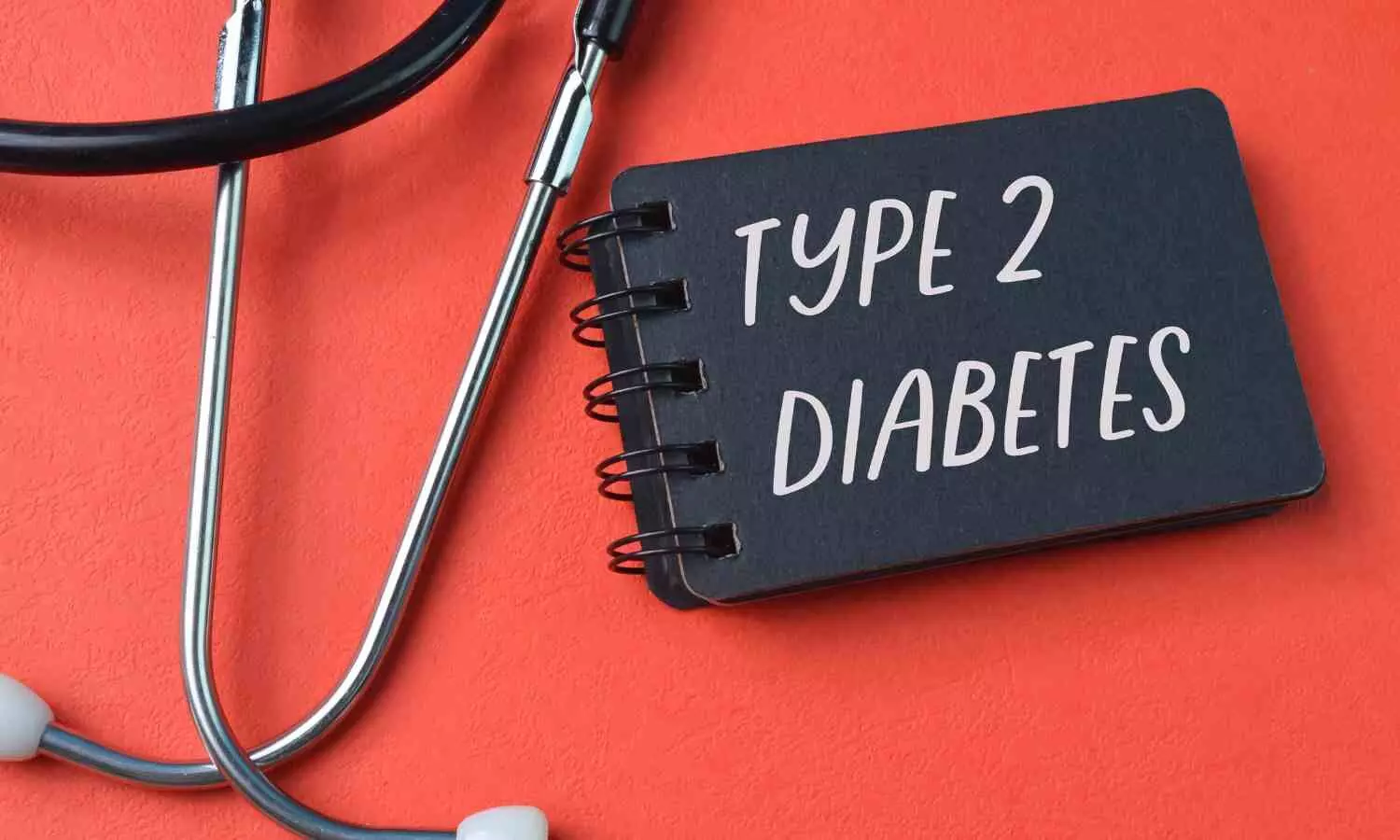The fight against TB was frozen in time, until now. See its future.
Powered by WPeMatico
Powered by WPeMatico
Powered by WPeMatico

Bengaluru: The Karnataka government is considering raising the retirement age for doctors serving in super-specialty hospitals under the medical education department, currently set at 60 years.
According to an ANI report, during an interaction with doctors at the Jayadeva Institute of Cardiovascular Sciences and Research in Bengaluru on Thursday, Karnataka Medical Education and Skill Development Minister Sharan Prakash Patil assured medical professionals that the government is keen on extending the retirement age to retain experienced doctors in super-speciality hospitals.
The move comes in response to concerns raised by senior doctors at Jayadeva, who pointed out that after spending nearly 35 years in medical education and training, they only get to serve around 20-25 years before retiring at 60.
“We have been deliberating on this issue for some time. To ensure better healthcare services and make the most of our experienced doctors, I will soon discuss the matter with chief minister Siddaramaiah and propose raising the retirement age for doctors in super-speciality hospitals,” Patil said, reports ANI.
In addition to the proposed retirement age extension, Patil announced a significant benefit for doctors working in the medical education department–an insurance facility. Currently, these doctors are not covered under any government insurance scheme, but the state is planning to implement Jeevana Sanjivini, a scheme already available under the health and family welfare department.
To further strengthen medical infrastructure, the minister declared that the government would allocate additional funds to Jayadeva Hospital to introduce robotic surgery facilities. “To stay ahead in medical innovation and technology, we are committed to equipping Jayadeva with the latest machines and infrastructure. If Jayadeva cannot have the best, no other hospital in India can,” he asserted.
Also Read:Karnataka Plans to Pay Govt Hospitals for Normal Deliveries: Dinesh Gundu Rao
Powered by WPeMatico

Srinagar: The Jammu and Kashmir government is gearing up to launch the SEHAT App, a transformative digital platform aimed at providing seamless healthcare services across the union territory. The app, a smarter version of the AB-PMJAY SEHAT scheme, is designed to provide a variety of essential services, from doctor appointments to ambulance bookings, all from the convenience of a smartphone.
The SEHAT App is part of the government’s broader initiative to make healthcare more accessible and efficient through technology. The app is also integrated with the Ayushman Bharat Pradhan Mantri Jan Arogya Yojana (AB-PMJAY) SEHAT scheme, which enhances coverage and simplifies healthcare management for the residents of Jammu and Kashmir.
Also Read: Overhaul of major health facilities, suggests Chawla committee
As of now, nearly 100 percent of families in Jammu and Kashmir have been registered under the AB-PMJAY-SEHAT scheme, and over 86.12 lakh Ayushman Golden Cards have been issued to beneficiaries. According to official data, about 15 lakh treatments have been provided so far, amounting to over Rs. 2,800 crore.
Also Read: J&K Medical Officer terminated over Unauthorized absence
Officials are confident that this initiative will greatly enhance healthcare delivery, alleviate hospital congestion, and empower residents with accessible digital medical solutions. Speaking to Kashmir Monitor, officials said, “The rollout of the app will further improve the efficiency of the SEHAT scheme. The SEHAT App, developed by BISAG-N at the request of the Health & Medical Education Department, will serve as a comprehensive platform for accessing all patient and healthcare practitioner services in Jammu and Kashmir. Those who need immediate health care will complete the entire process via the app and will receive immediate treatment without any wastage of time.”
Chief Secretary Atal Dulloo recently reviewed the app’s progress and instructed the concerned authorities to onboard all healthcare practitioners onto the platform to ensure a comprehensive service for users. He also emphasized the need to improve the registration process for doctors and paramedics who will provide home support and teleconsultation services.
Powered by WPeMatico

Kolkata: In a recent development, four individuals accused in a multi-crore financial irregularities case involving the state-run RG Kar Medical College & Hospital filed an “exemption petition” at a special court.
These four accused persons are R.G. Kar’s former controversial Principal Sandip Ghosh, his bodyguard and personnel assistant Afsar Ali, and private contractors Biplab Sinha and Suman Hazra.
Their counsels, on Wednesday, filed a petition at the special court praying for the exemption of their clients from the case which is being investigated by the Central Bureau of Investigation (CBI), news agency IANS reported.
The CBI has already submitted a detailed charge sheet in the matter at the special court describing Ghosh as the mastermind behind the alleged scam. The processes of framing of charge in the matter and subsequent trial process in the matter are expected to start shortly.
Also Read:RG Kar victim’s parents meet CBI Director
Now, the exemption petition filed by the four accused persons in the matter has brought a new turn in the sequence of the events. The judge of the special court will be hearing the exemption petition on March 25.
Ghosh, and the former SHO of Tala Police Station Abhijit Mondal, were also arrested by the CBI officials in connection with the ghastly rape and murder of a lady junior doctor of R.G. Kar within the hospital premises in August last year.
However, both were granted default bail in the matter by another special court in Kolkata then as the CBI failed to file a supplementary charge sheet against the duo within 90 days from the date of arrests. Although Mondal is currently behind bars on bail, Ghosh’s judicial custody has continued because of his involvement in the R.G. Kar financial irregularities case.
The main charges in the R.G. Kar financial irregularities case are manipulations in the tendering system of the institute, getting the infrastructure-related work there done by outsourced contractors bypassing the state public works department, smuggling of biomedical wastes of the hospital, and finally, selling of organs of unidentified bodies coming to the hospital morgue for autopsy purposes at premium prices outside.
Powered by WPeMatico

Kidney transplant recipients with type 2 diabetes treated with a new class of anti-obesity drugs were less likely to experience organ failure and survived longer, a new study shows. Not only is obesity a known risk factor for diabetes, but it also increases risk of postsurgical complications, such as inflammation, organ rejection, and early death.
Previous research had suggested some benefit for kidney transplant recipients with a history of type 2 diabetes who took the medications, originally designed to treat diabetes, at some point after their transplant and then experienced slower declines in kidney function than those who did not. These GLP-1 agonists include semaglutide, liraglutide, and dulaglutide, now marketed as Ozempic, Wegovy, Saxenda, Victoza, and Trulicity.
It remained unclear, however, whether physicians should prescribe the drugs, given their known side effects, which include inflammation in the pancreas and liver problems. There had also been concern that GLP-1 agonists might increase the risk for a rare form of thyroid cancer in patients already taking immune-suppressing drugs to prevent transplant rejection, a condition where the body’s immune system attacks the transplanted kidney as it would a foreign virus or bacteria.
Led by researchers at NYU Langone Health, the new study showed that those who were prescribed GLP-1 agonists, mostly within three years of receiving their transplant, were 49% less likely to experience organ failure-when the transplanted kidney stops functioning, and the patient has to resume dialysis-than those who had not been prescribed a GLP-1. Kidney transplant recipients taking the medications also had a 31% reduced risk of dying within five years of their starting on the medication, compared to those who did not take the drugs.
While risk for inflammation in the pancreas, liver problems, or thyroid cancer was not found to be higher in the patients with diabetes treated with GLP-1s, the study did show the treated group had a 49% greater chance of developing diabetic retinopathy. This potentially blinding damage to the light-sensitive tissue lining the back of the eyes often accompanies diabetes when blood sugar levels are not under control.
“Our study results are the strongest evidence to date that GLP-1 agonist drugs are largely safe and effective tools for addressing type 2 diabetes in kidney transplant recipients,” said study lead investigator, transplant surgeon, and obesity medicine specialist Babak Orandi, MD, PhD.
“Our research offers a large amount of real-world clinical data to guide the management of benefits and risks of GLP-1 use in kidney transplant recipients,” said Orandi, an associate professor in the Departments of Surgery and Medicine at NYU Grossman School of Medicine.
Publishing in the journal The Lancet Diabetes and Endocrinology online March 5, the study was designed to clarify the value and safety of the drugs. Researchers reviewed the medical records of 18,016 kidney transplant recipients with pretransplant diabetes in the United States between 2013 and 2020, of whom 1,916 were prescribed GLP-1s.
“Our findings also show that while the benefits of GLP-1 drugs are significant, their use does come with some added risk of diabetic retinopathy, suggesting that physicians need to carefully monitor the eye health of kidney transplant recipients with diabetes who are started on these drugs,” said study senior investigator and epidemiologist Mara McAdams-DeMarco, PhD. McAdams-Demarco is an associate professor in the Departments of Surgery and Population Health at NYU Grossman School of Medicine.
People with diabetes lose the ability to produce or efficiently use insulin, the hormone produced by the pancreas and needed to regulate the body’s blood sugar and energy levels. Because diabetic retinopathy, the leading cause of blindness in the United States, can occur in people whose blood sugar levels are corrected too quickly, Orandi says the key to managing its risk is to screen for diabetic retinopathy, particularly in people with uncontrolled diabetes, and make sure that blood sugar levels are under control prior to taking GLP-1s. He also suggests slowly adjusting GLP-1 doses from small to large (titrating) in kidney transplant recipients with severe diabetes or in patients with a history of eye problems.
Among the study’s other findings was that GLP-1 users were more likely to be younger, female, Black, and poor than those who were not prescribed the medications.
For the study, researchers used data from the U.S. Renal Data System, which integrates data from the Organ Procurement and Transplantation Network that allocates organ transplantation across North America, the U.S. Centers for Medicare and Medicaid Services, and Medicare claims data, including information on prescription drug use.
More research is needed, the researchers say, into the biological mechanisms behind GLP-1 agonists and how they improve kidney health posttransplant.
Type 2 diabetes is among the leading causes of end-stage kidney disease, the primary cause for a quarter-million Americans now awaiting a kidney transplant.
Reference:
Orandi, Babak J et al., GLP-1 receptor agonists in kidney transplant recipients with pre-existing diabetes: a retrospective cohort study, The Lancet Diabetes & Endocrinology, DOI:10.1016/S2213-8587(24)00371-1
Powered by WPeMatico

A new study published in the journal of Cardiology in the Young showed that although vitamin D deficiency is frequent and associated with decreased exercise capacity in coronary heart disease (CHD), vitamin D levels were comparable across CHD patients and controls.
Even while improvements in medicine and surgery have significantly increased survival rates, people with congestive heart failure still confront obstacles including less physical fitness, a lower quality of life, and a worse prognosis than their healthy peers. In this demographic, heart failure continues to be the leading cause of morbidity and death.
Vitamin D has immune-modulatory qualities and is important for cardiovascular health in addition to being essential for bone health, calcium balance, and skeletal mineralization. The structural remodeling of cardiac muscle and vascular tissue is facilitated by the activated form of vitamin D, also known as 1,25(OH)2 vitamin D, which is crucial for preserving cardiovascular health.
Although vitamin D insufficiency is common, it is essential for healthy arteries, good organ function, and athletic capacity. CHD patients frequently have a decreased ability for activity. Thus, this study compared the blood 25-hydroxy vitamin D levels of people with CHD to those of controls who did not have the condition and to look into any relationships with exercise capacity and peripheral microvascular function.
A total of 55 adult CHD patients ( with median age of 31 years) and 55 age- and gender-matched controls without heart disease were compared for serum 25-hydroxy vitamin D levels. The study also looked at correlations between CHD and exercise capacity, peripheral microvascular function, muscle strength, and biventricular function. As a result, patients received cardiopulmonary exercise tests, muscular strength assessments, transthoracic echocardiography, and fingertip arterial tonometry.
The findings showed that 91% of controls and 93% of CHD patients had 25-hydroxy vitamin D levels less than 30 ng/ml, with both groups expressing different values based on the study season. There was no discernible difference of 25-hydroxy vitamin D levels between the patients and controls.
Even after controlling for season, there was a significant correlation between vitamin D levels and percent-predicted peak oxygen consumption in CHD patients, but not with body mass index, age, peripheral microvascular function, blood pressure, high-sensitivity C-reactive protein, N-terminal-pro hormone B-type natriuretic peptide, cholesterol levels, ventricular function, or muscle strength.
Overall, adults with CHD frequently have vitamin D deficiency, which is associated with exercise intolerance. Adults with CHD and controls without heart disease did not substantially vary in their serum levels of 25-hydroxy vitamin D.
Reference:
Vanreusel, I., Hens, W., Van Craenenbroeck, E. M., Paelinck, B. P., Segers, V. F. M., & Van Berendoncks, A. (2025). Vitamin D levels correlate with exercise capacity in adults with CHD. Cardiology in the Young, 1–8. https://doi.org/10.1017/S1047951125000526
Powered by WPeMatico

A new study published in the Journal of American Medical Association showed that patients with moderate to severe papulopustular rosacea responded better to a low-dose (40 mg) modified formulation of minocycline hydrochloride (DFD-29) than doxycycline and placebo.
Papulopustular rosacea (PPR) is being treated with DFD-29, a low-dose modified formulation of minocycline hydrochloride. When treating papulopustular rosacea, minocycline hydrochloride modified release capsules, 40 mg (DFD-29), have demonstrated a notable therapeutic advantage over doxycycline and a placebo. Yet, the effectiveness and impact are not fully documented. Thus, to ascertain the safety and effectiveness of DFD-29, 40 mg, in treating PPR, Neal Bhatia and colleagues carried out this investigation in comparison to doxycycline, 40 mg, and a placebo.
Data from 2 phase 3 randomized clinical studies (MVOR-1 and MVOR-2) from 61 US and German locations between March 2022 and May 2023 were included in this analysis. Included were healthy persons with mild to severe PPR who were at least 18 years old. For 16 weeks, the participants were randomized 3:3:2 to receive 40 mg of oral DFD-29 (minocycline hydrochloride capsules), 40 mg of doxycycline, or a placebo once daily.
The proportion of individuals who had treatment success on the Investigator’s Global Assessment (IGA) with DFD-29 compared to placebo and the reduction in the total number of inflammatory lesions with DFD-29 compared to placebo were the coprimary efficacy outcomes. Comparisons between DFD-29 and doxycycline in coprimary outcomes and between DFD-29 and a placebo in erythema reduction were examples of secondary outcomes.
MVOR-1 had 323 randomized individuals, whereas MVOR-2 involved 330 randomized participants. IGA success rates showed that DFD-29 was more effective than both doxycycline and a placebo. Also, DFD-29 outperformed doxycycline and placebo in terms of least-squares mean decreases in total inflammatory lesions.
MVOR-1 reported 32 of 121 (26.4%), 25 of 116 (21.6%), and 27 of 76 (35.5%) adverse events with DFD-29, doxycycline, and placebo, whereas MVOR-2 reported 40 of 121 (33.1%), 51 of 122 (41.8%), and 30 of 82 (36.6%) adverse events.
The most frequent side effects with DFD-29, doxycycline, and placebo were COVID-19, which was reported in 4 of 121 (3.3%), 3 of 116 (2.6%), and 4 of 76 (5.3%) in MVOR-1 and 7 of 122 (5.7%), 8 of 121 (6.6%), and 5 of 82 (6.1%) in MVOR-2. Also, nasopharyngitis was reported in 4 of 121 (3.3%), 2 of 116 (1.7%), and 3 of 76 (3.9%) in MVOR-1 and 13 of 122 (10.7%), in MVOR-2, respectively. Overall, in treating PPR, DFD-29 showed a good risk-benefit balance and was more effective than both doxycycline and a placebo.
Source:
Bhatia, N., Del Rosso, J., Stein Gold, L., Lain, E., Draelos, Z. D., Sidgiddi, S., & MVOR-1 and MVOR-2 Study Investigators. (2025). Efficacy, safety, and tolerability of oral DFD-29, a low-dose formulation of minocycline, in Rosacea: Two phase 3 randomized clinical trials. JAMA Dermatology (Chicago, Ill.). https://doi.org/10.1001/jamadermatol.2024.6542
Powered by WPeMatico

23% of people infected with SARS-CoV-2 between 2021 and 2023 developed long-COVID, and in more than half of them the symptoms persisted for two years. These are the main conclusions of a study conducted by ISGlobal, a centre supported by the ”la Caixa” Foundation, and in collaboration with the Germans Trias i Pujol Research Institute (IGTP), as part of the European END-VOC project. The risk of developing long-COVID depends on several factors, according to the results published in BMC Medicine.
After overcoming an initial SARS-CoV-2 infection, some people develop long-COVID. It manifests itself with symptoms that persist for at least three months, including respiratory, neurological, digestive or general symptoms, such as fatigue and exhaustion. Most studies of long-COVID have been conducted in a clinical context, which may not fully capture its impact on the general population.
“A population-based cohort study allowed us to better estimate the magnitude of long-COVID and identify risk and protective factors,” explains Manolis Kogevinas, ISGlobal researcher and lead author of the study. The study followed 2,764 adults from the COVICAT cohort, a population-based study designed to characterize the health impact of the pandemic on the population of Catalonia. Participants completed three questionnaires — in 2020, 2021 and 2023 — and provided blood samples and medical records.
“Being a woman, having experienced a severe COVID-19 infection and having a pre-existing chronic disease such as asthma are clear risk factors,” says Marianna Karachaliou, co-author of the study and researcher at ISGlobal. “In addition, we observed that people with obesity and high levels of IgG antibodies prior to vaccination were more likely to develop long-COVID,” she adds. The latter factor may reflect hyperactivation of the immune system after the initial infection, which in some cases may contribute to the persistence of long-term symptoms.
The analysis also identified protective factors that could reduce the risk of developing the condition. These include vaccination before infection and a healthy lifestyle, which includes regular physical activity and adequate sleep. In addition, the risk was lower in people who were infected after the Omicron variant became dominant. This could be explained by the tendency for infections to be milder or by greater general immunity to COVID-19.
Based on the symptoms reported by the participants and their medical records, the researchers identified three clinical subtypes of long-COVID. They were classified according to whether the symptoms were neurological and musculoskeletal, respiratory, or severe and involved multiple organs. In addition, the researchers found that 56% of people with long-COVID were still experiencing symptoms two years later.
“Our results show that a significant percentage of the population has long-COVID, which in some cases affects their quality of life,” says Judith Garcia-Aymerich, ISGlobal researcher and last author of the study. “Establishing collaborations with other countries will be key to understanding whether these findings can be extrapolated to other populations,” she concludes.
“On the fifth anniversary of COVID-19, significant progress has been made in understanding the disease. However, as this study shows, the pandemic’s impact on mental health, work, and quality of life remains profound. While this research is a step forward, much remains to be done to fully understand this invisible illness,” says Rafael de Cid, scientific director of GCAT at IGTP. “The COVICAT cohort has been instrumental in advancing research, and we need to acknowledge the invaluable contribution of volunteers and the Blood and Tissue Bank team, particularly during the challenging times of 2020”, he adds.
Reference:
Kogevinas, M., Karachaliou, M., Espinosa, A. et al. Risk, determinants, and persistence of long-COVID in a population-based cohort study in Catalonia. BMC Med 23, 140 (2025). https://doi.org/10.1186/s12916-025-03974-7
Powered by WPeMatico

Researchers have found in a new study that exposure to orange juice significantly reduced the microhardness of all tested resin restorative materials, demonstrating its erosive effects.
Further, Vita Enamic showed the greatest decrease but retained the highest overall hardness, indicating strong mechanical properties. Opus Bulk Fill APS had the lowest hardness values, while Charisma Classic exhibited the least reduction, suggesting better resistance to acid erosion.
Various factors, including acidic diets and beverages, can compromise the longevity of restorations by affecting their physical and mechanical properties.
This study aims to evaluate, in vitro, the performance of different resin restorative materials and their interaction in an exogenous acid medium (orange juice), as well as erosion and whether there is interference in the microhardness of the composite resins. 48 samples from your different materials were distributed across 8 groups. Microhardness measurements were conducted before and after immersion in orange juice for 2 weeks, followed by brushing simulations.
The data was analyzed using SPSS 20, initially checking for normality, and then two-way ANOVA followed by Tukey’s post hoc tests were applied for comparison at the significance level of 95%.
Results: There was a significant change in microhardness values among both groups (orange juice and distilled water) (p<0.05), with the orange juice group displaying a greater reduction in hardness over time. Vita Enamic showed the greatest amount of reduction in values (p<0.05) yet still maintained higher values compared to the other materials.
Charisma Classic experienced the least, though a significant change (P<0.05) in microhardness when exposed to orange juice. Overall, all materials showed a significant decrease in microhardness when immersed in orange juice, which highlights the erosive effects of acidic environments on resin restorative materials. Simulated brushing after acid exposure had minimal impact on the results.
Reference:
Baroudi, K., Islam, M. S., Awadalkreem, F., Hussain, Z. E., Shaheen, C., Moreira, P. P., Baroudi, A., Amaral, M., & da Siliva-Concilio, L. R. (2024). Influence of acidic drinks and brushing on microhardness of restorative resin materials. The Open Dentistry Journal, 17, [article number]. https://doi.org/10.2174/0118742106348736241010105828
Powered by WPeMatico
